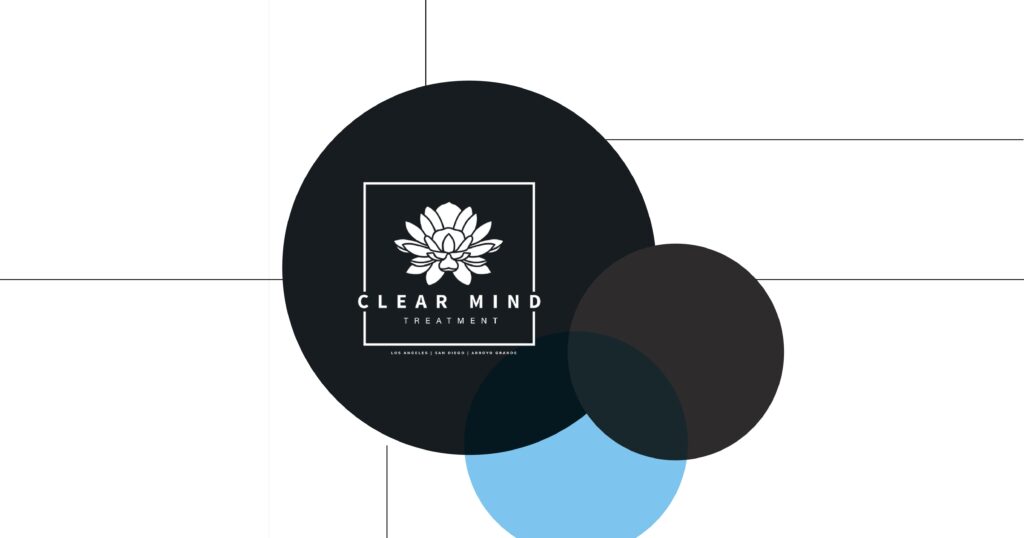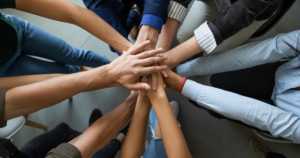Have you ever experienced a conversation where someone’s words didn’t quite match the vibe you picked up from their body language? The ability to read people—deciphering nonverbal cues and subtle hints—can be a transformative skill in both personal and professional relationships. By sharpening your awareness of these signals, you can connect more deeply with others, anticipate their reactions, and respond to their needs with greater empathy and effectiveness. In this comprehensive guide, we’ll teach you how to read people, interpret essential nonverbal clues like body language and facial expressions, and apply these insights to succeed in all areas of life.
The Importance of Reading People
Understanding others is at the heart of successful communication. According to research from Psychology Today, only about 7% of communication is verbal; the remaining 93% comes from nonverbal cues, with 55% attributed to body language and 38% to tone of voice. This means the words someone says are often just the tip of the iceberg. Learning how to read people can help you:
- Enhance communication skills: By accurately interpreting what others feel, you can tailor your responses to avoid misunderstandings and resolve conflicts efficiently.
- Build stronger relationships: Perceptiveness fosters empathy and support, whether you’re making new friends, deepening existing bonds, or excelling as a leader in your workplace.
- Resolve conflicts: Negotiators and mediators rely heavily on reading nonverbal cues to sense discomfort or unspoken concerns, allowing them to address issues proactively.
Mastering the art of reading people opens doors to personal growth and professional advancement, enabling you to navigate complex social landscapes with confidence.
Understanding Body Language
Body language is a powerful form of nonverbal communication. Every movement, gesture, and posture can offer clues about a person’s true feelings and intentions. Here’s a closer look at key body language signals:
| Body Language Cue | Possible Meaning |
|---|---|
| Posture | Straight posture indicates confidence; slouching may signal discomfort or insecurity. |
| Arms & Legs | Crossed arms can be defensive or self-protective; shaking legs often reflect nervousness or impatience. |
| Hands | Gesturing can emphasize points; hiding hands may suggest dishonesty or anxiety. |
| Movement | Fidgeting, shifting, or pacing are commonly linked to agitation or nervousness. |
Recognizing these cues in context is crucial. For example, crossed arms might simply mean someone is cold, so always consider the environment and situation before drawing conclusions.
Facial Expressions and Microexpressions
The human face can convey an astonishing array of emotions, sometimes in a split second. These fleeting “microexpressions” often reveal a person’s true feelings, even when they attempt to hide them. According to renowned psychologist Paul Ekman, there are universal facial expressions tied to basic emotions:
- Smiles: Genuine smiles involve the eyes as well as the mouth, while forced smiles do not.
- Raised eyebrows: Can indicate surprise, skepticism, or disbelief depending on context.
- Lip biting: Often a sign of anxiety, worry, or hesitation.
- Frowns: Typically associated with confusion, displeasure, or concern.
Spotting microexpressions requires careful observation and practice, as these involuntary flashes of emotion may last only a fraction of a second. By tuning in to these subtle signals, you can better understand the real emotions beneath the surface.
The Role of Eye Contact
Eye contact is a cornerstone of effective communication. Studies suggest that the optimal duration of eye contact during conversation is about 3.3 seconds; prolonged staring, especially with strangers, can feel uncomfortable and even threatening. Here’s what you can learn from someone’s eyes:
- Direct eye contact: Indicates interest, engagement, or attraction.
- Avoiding eye contact: May signal nervousness, guilt, or discomfort.
- Rapid blinking: Often a sign of stress or distress.
- Dilated pupils: Can suggest excitement, fear, or strong emotional arousal.
- Direction of gaze: Looking away or to the side when asked a direct question can sometimes be a clue that someone is being untruthful or evasive.
While these cues are useful, remember that cultural differences can influence how eye contact is perceived. In some cultures, prolonged eye contact is a sign of respect, while in others, it may be considered rude.
Decoding Tone of Voice
The tone in which something is said can completely alter its meaning. Paying attention to how someone speaks—not just what they say—can provide invaluable insights into their emotional state. Consider the following vocal components:
- Pitch: High pitch may indicate excitement or anxiety; low pitch often signals calmness or sadness.
- Speed: Rapid speech can be a sign of nervousness or anger, while slow speech may suggest fatigue or contemplation.
- Volume: Raised voices can signal agitation, while softer tones may reveal insecurity or hesitation.
- Emphasis: The words a person stresses can change the entire meaning of a sentence, revealing what’s truly important to them.
Learning to interpret tone of voice will enhance your overall understanding of conversations, allowing you to respond more appropriately to others’ feelings and intentions.
Recognizing Social Cues
Social cues are the unspoken rules and signals that guide interactions. They help us understand what’s appropriate in various contexts and can make the difference between fitting in or standing out awkwardly. Key social cues to observe include:
- Personal space: Respecting boundaries is vital. Standing too close can make others uncomfortable.
- Facial expressions: Quick glances at someone’s face can reveal their current mood or reaction to what’s being said.
- Body language: Consistent with the spoken message, positive body language reinforces trust and rapport.
- Interruption: Allowing others to finish speaking before responding demonstrates respect and attentiveness.
Understanding and adapting to social cues is especially important for those who experience social anxiety or have difficulty reading others, such as individuals on the autism spectrum. For more on the science of social signals, visit Scientific American.
Developing Your Observation Skills
Becoming more observant is a process that requires intentional practice. Here are strategies to help you hone your observation abilities:
- Be present: Focus on the other person rather than rehearsing your next response. Notice their expressions, gestures, and posture.
- Stay objective: Avoid jumping to conclusions. Interpret signals within the full context of the conversation and setting.
- Seek feedback: Ask friends or colleagues how you come across in conversations. Constructive criticism can help you identify areas for improvement.
- Practice regularly: Like any skill, reading people improves with practice. Observe interactions in various settings, from work meetings to casual gatherings, and reflect on what you learn.
With time and conscious effort, your ability to interpret nonverbal cues and read people will become second nature.
Enhancing Your Emotional Intelligence
Emotional intelligence (EQ) refers to the ability to recognize, understand, and manage your own emotions while empathizing with others. A high EQ is closely linked to effective people-reading skills. To boost your emotional intelligence:
- Practice self-awareness: Regularly reflect on your feelings and triggers. Understanding your emotional patterns allows you to respond more thoughtfully in interactions.
- Show empathy: Put yourself in others’ shoes, even when you disagree. Empathy fosters trust and deeper connections.
- Adapt to situations: Adjust your behavior based on the emotional climate of the room and the needs of others.
- Be a supportive listener: Sometimes, listening without offering solutions is the best way to show you care.
Developing emotional intelligence not only improves your ability to read people but also enhances every aspect of your interpersonal relationships.
Trusting Your Intuition
Intuition, often called a “gut feeling,” is the subconscious processing of signals you might not be consciously aware of. If you sense that someone’s behavior doesn’t match their words, trust your instincts. Your brain is likely picking up on microexpressions, body language, or tone of voice that signals something is off.
While intuition should not be your only guide, it can be a valuable tool in situations where you need to make quick judgments. If you have a nagging feeling that something isn’t right, pay closer attention to the person’s nonverbal cues and seek additional context before making decisions.
Applying People-Reading Skills in Daily Life
Mastering the skill of reading people can have far-reaching benefits in your everyday life. Here are some practical applications:
- Career success: Understanding colleagues, supervisors, and clients enables you to communicate more effectively, build stronger teams, and resolve workplace conflicts.
- Relationship building: Being attuned to the emotions of friends and loved ones helps you offer support and deepen your connections.
- Conflict avoidance: Anticipating how others might react allows you to adjust your approach, reducing the likelihood of misunderstandings or arguments.
Whether you’re negotiating a business deal, comforting a friend, or networking at a social event, strong people-reading skills give you a distinct advantage.
Common Mistakes When Reading People
Even experienced communicators can make mistakes when interpreting nonverbal cues. Here are common pitfalls to avoid:
- Focusing solely on words: Remember, much of communication is nonverbal. Pay attention to body language, tone, and context.
- Ignoring context: The same gesture or expression can mean different things in different situations. Always consider the broader circumstances.
- Overlooking personal differences: Cultural background, personality, and individual experiences shape how people express themselves. Avoid making assumptions based on a single cue.
- Neglecting to practice: Like any skill, people-reading requires ongoing practice. Make it a regular part of your self-development routine.
By staying mindful of these mistakes, you can refine your ability to read people accurately and empathetically.
Unlock Your Potential with Clear Mind Treatment
If you’re ready to take your communication skills and emotional intelligence to the next level, Clear Mind Treatment can help. Our expert team specializes in personal development, mental wellness, and therapy services designed to empower you with the tools you need to connect with others, overcome challenges, and thrive in every aspect of your life. Whether you’re seeking guidance for anxiety, looking to enhance your interpersonal skills, or striving for a healthier mindset, Clear Mind Treatment is here to support your journey. Explore our range of programs and discover how you can unlock your full potential today.
FAQs about Reading People
Is it possible to accurately read what someone is thinking?
While it’s unlikely you’ll ever know precisely what someone else is thinking, you can get a strong sense of their emotions and intentions by paying close attention to nonverbal cues. By observing body language, facial expressions, and tone of voice, you can interpret how someone truly feels, even when their words might say otherwise. With practice, your accuracy will improve, but always consider context and individual differences.
What are the main benefits of learning to read people?
Developing people-reading skills enhances your ability to communicate effectively, build trust, and navigate social situations with confidence. This skill helps you foster deeper relationships, resolve conflicts before they escalate, and succeed in professional environments where understanding others is crucial. Ultimately, it leads to more harmonious interactions and greater personal fulfillment.
Which nonverbal cues should I pay most attention to?
Some of the most telling nonverbal cues include body posture, eye contact, facial expressions, gestures, and tone of voice. Together, these signals provide a fuller picture of a person’s true feelings. For example, a person may verbally agree with you but display closed body language or avoid eye contact, indicating discomfort or disagreement.
How can I improve my ability to read people?
Improving your people-reading skills involves practice, mindfulness, and education. Observe people in various settings, ask for feedback, and reflect on your own interactions. Consider reading books or taking courses on emotional intelligence and nonverbal communication for structured learning. Over time, you’ll become more attuned to subtle signals and context.
Are there any risks or drawbacks to reading people?
While people-reading is a valuable skill, overanalyzing or misinterpreting cues can lead to misunderstandings. It’s important to avoid making snap judgments based on a single gesture or expression. Always seek additional context and remain open to clarifying conversations. Additionally, respect privacy and boundaries—some people may feel uncomfortable if they sense you’re scrutinizing their every move.






